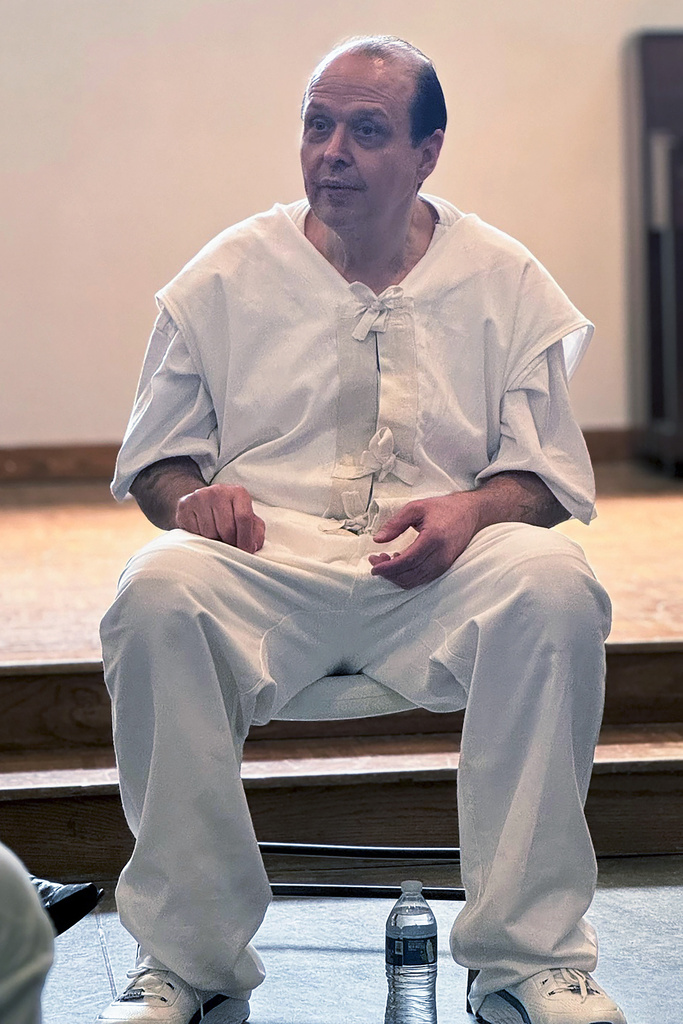Texas Man Faces Execution in Shaken Baby Syndrome Case \ Newslooks \ Washington DC \ Mary Sidiqi \ Evening Edition \ Robert Roberson, a Texas man convicted of killing his 2-year-old daughter in 2002, is set to be executed, potentially marking the first U.S. execution tied to a shaken baby syndrome conviction. While prosecutors argue that Roberson fatally injured his daughter, his defense claims the child died from undiagnosed pneumonia, raising concerns over the validity of shaken baby syndrome as a cause of death. The case has sparked renewed debate about the diagnosis.
Controversial Shaken Baby Syndrome Case: Quick Looks
- Scheduled execution: Robert Roberson is set to be executed for his 2002 murder conviction, the first linked to shaken baby syndrome.
- Cause of death dispute: Roberson’s lawyers argue new evidence shows his daughter died from severe pneumonia, not abuse.
- Prosecutors’ stance: They maintain that Roberson caused the fatal injuries and that the new evidence does not disprove their case.
- Shaken baby syndrome debate: Critics argue the diagnosis is flawed, while medical experts assert its scientific validity.
- Legal context: Other U.S. courts have overturned shaken baby syndrome convictions, but Roberson’s appeals for a stay of execution have been denied.
Deep Look
This week, Robert Roberson, a 57-year-old Texas man, is scheduled to become the first person in the United States to be executed for a murder conviction linked to shaken baby syndrome (SBS). Roberson was convicted for the 2002 death of his 2-year-old daughter, Nikki Curtis, who died after suffering severe head injuries. For over two decades, Roberson has maintained his innocence, insisting that his daughter’s death was not caused by abuse but rather by undiagnosed medical complications. His case has sparked a heated debate over the validity of shaken baby syndrome and whether his conviction was based on outdated and flawed scientific evidence.
In 2002, Roberson rushed his daughter Nikki to the hospital after she fell out of bed in their home in Palestine, Texas. Nikki had been severely ill for a week, and Roberson’s defense now argues that she was suffering from pneumonia that went undiagnosed, which ultimately led to sepsis and her death. Despite his account, Roberson was arrested, charged with murder, and convicted in 2003. Prosecutors claimed that Roberson violently shook his daughter, causing fatal head injuries—injuries they attributed to shaken baby syndrome, a widely accepted medical diagnosis at the time.
Roberson’s legal team, alongside a bipartisan group of Texas lawmakers, medical experts, and advocates, is not contesting the reality of child abuse or head injuries caused by abuse. However, they argue that Roberson’s conviction was based on flawed medical evidence. The original trial heavily relied on the diagnosis of shaken baby syndrome, which has since come under scrutiny. Roberson’s supporters claim that new medical evidence shows that Nikki died from complications related to pneumonia, not trauma. According to his attorney, Gretchen Sween, Nikki’s illness was exacerbated by medications that should not have been prescribed, making it harder for her to breathe.
Shaken baby syndrome, now referred to as “abusive head trauma,” is a diagnosis that links severe brain injuries in infants and young children to violent shaking or forceful impact. It is associated with a “triad” of symptoms: bleeding around the brain, brain swelling, and bleeding in the eyes. Dr. Suzanne Haney, a child abuse pediatrician and member of the American Academy of Pediatrics Council on Child Abuse and Neglect, explains that this type of injury typically results from violent shaking or trauma inflicted by an adult. The term “abusive head trauma” was adopted in 2009 to provide a broader diagnostic category.
Each year, approximately 1,300 cases of shaken baby syndrome or abusive head trauma are reported in the U.S., according to the National Center on Shaken Baby Syndrome. While the diagnosis remains widely accepted, critics argue that it has led to wrongful convictions. These critics, including Roberson’s legal team, claim that doctors have historically focused too narrowly on the triad of symptoms without adequately considering alternative causes, such as accidental short falls or underlying medical conditions like infections, that could mimic abusive head trauma.
Kate Judson, executive director of the Center for Integrity in Forensic Sciences, points out that Roberson’s case hinges on whether his daughter’s death was misdiagnosed. Judson argues that child abuse is real and dangerous, but in cases like Roberson’s, there may be other explanations that were not sufficiently explored at trial. “This is a case about whether someone was misdiagnosed and justice wasn’t served,” Judson said. She contends that doctors failed to fully consider Nikki’s illness as a potential cause of her death.
On the other side of the debate are prosecutors and many in the medical community who stand by the shaken baby syndrome diagnosis. Prosecutors in Roberson’s case argue that the new evidence of pneumonia does not disprove their findings, and they maintain that Nikki’s death was the result of abuse inflicted by her father. After a 2022 hearing to review the new medical evidence, a judge ultimately rejected the theory that pneumonia or other illnesses caused Nikki’s death. Dr. Haney declined to comment directly on Roberson’s case, but she emphasized that the medical community remains confident in the science behind abusive head trauma. She warned that pushing back against the diagnosis could interfere with efforts to prevent child abuse, potentially leading to more harm for children.
Roberson’s scheduled execution has also renewed legal scrutiny of shaken baby syndrome. In recent years, courts across the U.S. have overturned several convictions tied to this diagnosis. In states like California, Ohio, Massachusetts, and Michigan, courts have dropped charges or vacated convictions, often citing advances in medical science that have cast doubt on the reliability of SBS diagnoses. Just last week, in a separate Texas case, the state’s Court of Criminal Appeals ordered a new trial for a defendant convicted of shaken baby syndrome, citing new scientific evidence that likely would have led to an acquittal.
Despite these legal shifts, Roberson’s appeals for clemency have been repeatedly denied. On Friday, the Texas Court of Criminal Appeals rejected his latest request to stay his execution. His case now represents a critical intersection between evolving medical science and the justice system’s application of older forensic methods.
According to Robin Maher, executive director of the Death Penalty Information Center, at least eight people in the U.S. have been sentenced to death for crimes linked to shaken baby syndrome. Two of those individuals have since been exonerated, and Roberson is the only one currently facing an execution date. “According to the National Registry of Exonerations, at least 30 people across the country have been exonerated based on this discredited scientific theory,” Maher said.
However, not everyone agrees that shaken baby syndrome has been discredited. Danielle Vazquez, executive director of the National Center on Shaken Baby Syndrome, points to research indicating that most SBS convictions are upheld. A 2021 study found that 97% of more than 1,400 convictions related to abusive head trauma between 2008 and 2018 were affirmed, suggesting that most SBS cases withstand legal and scientific scrutiny. Vazquez and other proponents of the diagnosis worry that skepticism about SBS could send the wrong message, causing parents or caregivers to believe that shaking a baby is not harmful.
As the legal and medical communities continue to debate the legitimacy of shaken baby syndrome, Robert Roberson’s case stands at the center of this controversy. His execution, scheduled for Thursday, may be one of the final chapters in a long, contentious battle over a diagnosis that has shaped child abuse cases for decades. Whether Roberson is granted clemency or executed, his case has reignited a nationwide discussion on the accuracy of forensic science and the role of medical diagnoses in criminal convictions.
Texas Man Faces Texas Man Faces Texas Man Faces







